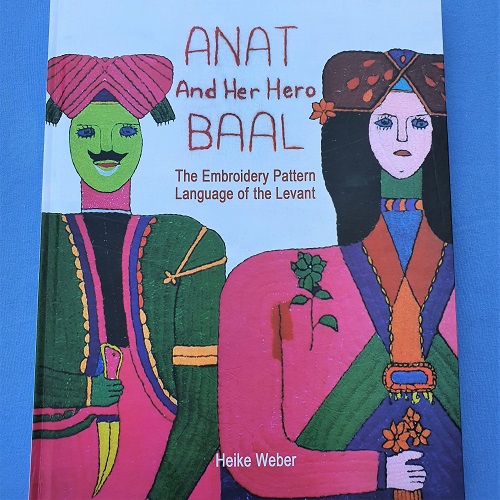ANAT and Her Hero BAAL The Embroidery Pattern Language of the Levant
The book covers research into the development of clothing in the Levant and social analysis of the retreat of folkloric practices over the last 150 years. The book, by author Heike Weber, compares the traditional embroidery patterns of the Levant with the early patterns of humankind in the same area and concludes that the ancient symbolic patterns, which express a philosophy of Life, have survived in folkloric practice over the millenniums.
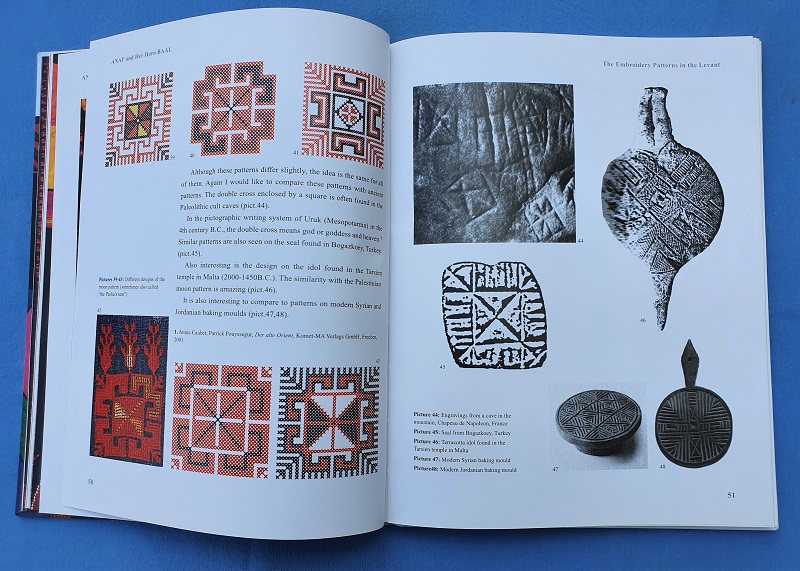
Author: Heike Weber
Publisher: Syrian Handcrafts Limited
Format & layout
Hardcover
176 pages
Text and images on a white background
English
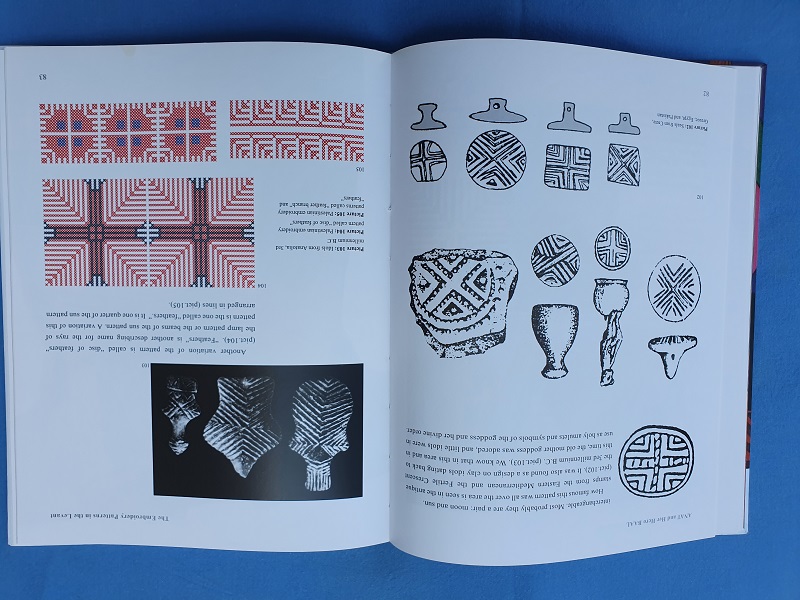
Photos, Illustrations & Diagrams
As the book’s flap text states:
“The book compares the traditional embroidery patterns of the Levant with the early patterns of humankind in the same area.” As such it is richly illustrated with photographs, diagrams, and sketches of both embroidery and artefacts.
Most spreads contain both colour and black-and-white images complemented by embroidery graphs and images of actual garments and artefacts. The book opens with a map of the region.
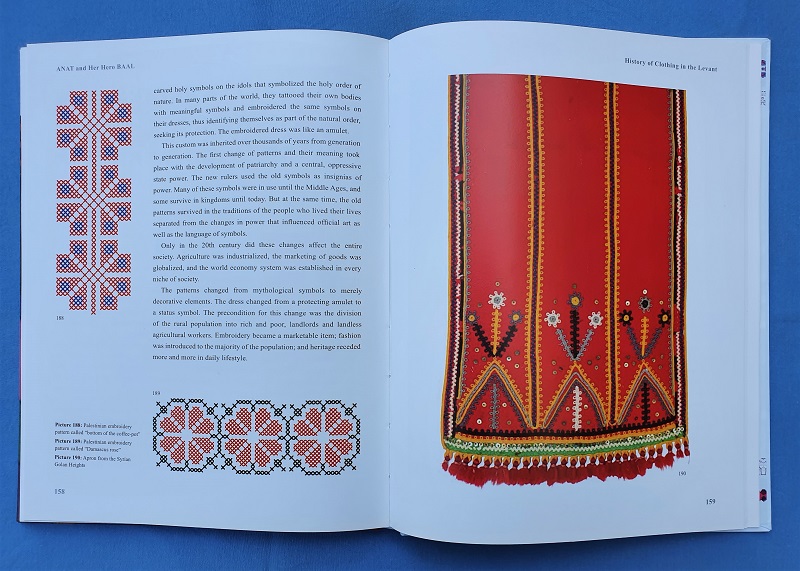
Introduction
Heike Weber is a German woman who has lived in Syria since 1982. She is the founder and director of the ANAT Centre for Arab Textile Handicrafts. Married into the Syrian culture, Heike observed and studied the culture and handicrafts traditions, culminating in the ANAT centre and this book.
“This book is the result of over thirty years of looking at embroidery and embroiderers, comparing and practising, and slowly coming closer to a different way of thinking, a womanly philosophy of life.”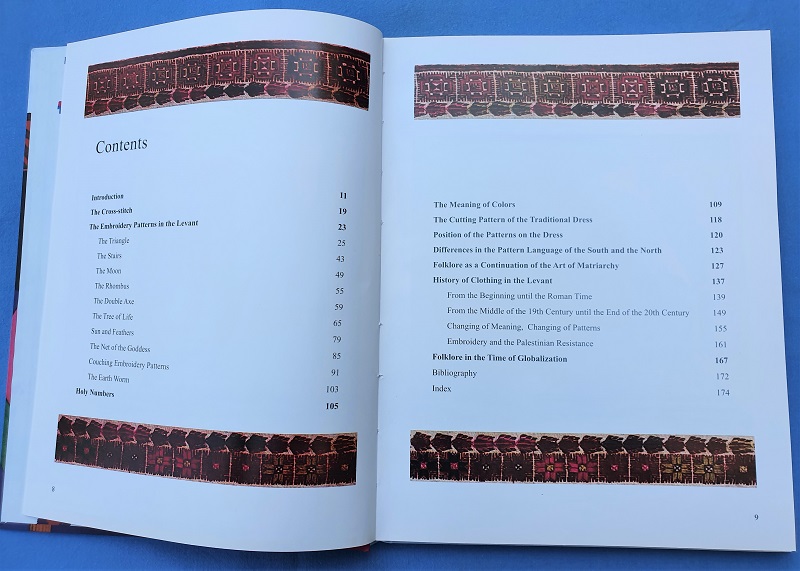
Content
In the introduction, Heike describes her first attempts at embroidery: “
What I had embroidered looked a bit like Palestinian embroidery but could not be deciphered by an educated embroideress. You could compare it with somebody who does not know Arabic and imitates Arabic writing. For anybody who does not know Arabic, it looks like Arabic, but it is not readable for an Arab.”
With this book, Heike attempts to teach the alphabet of Syrian and Palestinian embroidery. To clarify its origin, its symbolic meaning, and how it references ancient symbols and patterns of the region it originates from.
The book is divided into ten chapters of which two chapters are further divided into sections each discussing different symbols and heritage in more detail.
Each section is explained at the hand of real examples from her own or other respected collections. Each pattern, design or motif is put into a regional, historical and cultural context.
The book concludes with a comprehensive bibliography and glossary of Arab terminology.
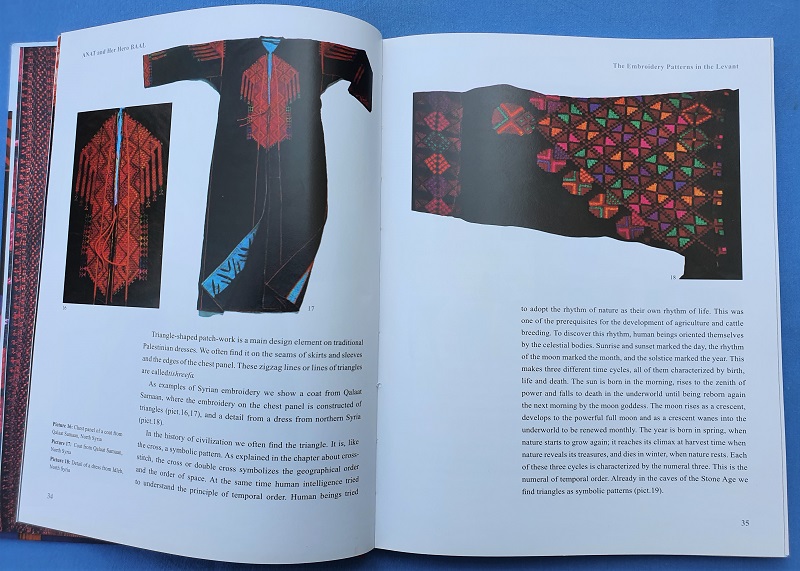
Conclusion
The book’s colourful and almost childlike cover design belies its importance and valuable contribution to the lexicon of Arab embroidery. Heike covers a lot of ground that goes beyond mere embroidery. She touches on aspects of culture, the role of the matriarchal society, the place of symbols and patterns in folklore, and the language and grammar of stitch that are being lost in a patriarchal and written society.
This book is
available from our online shop.




